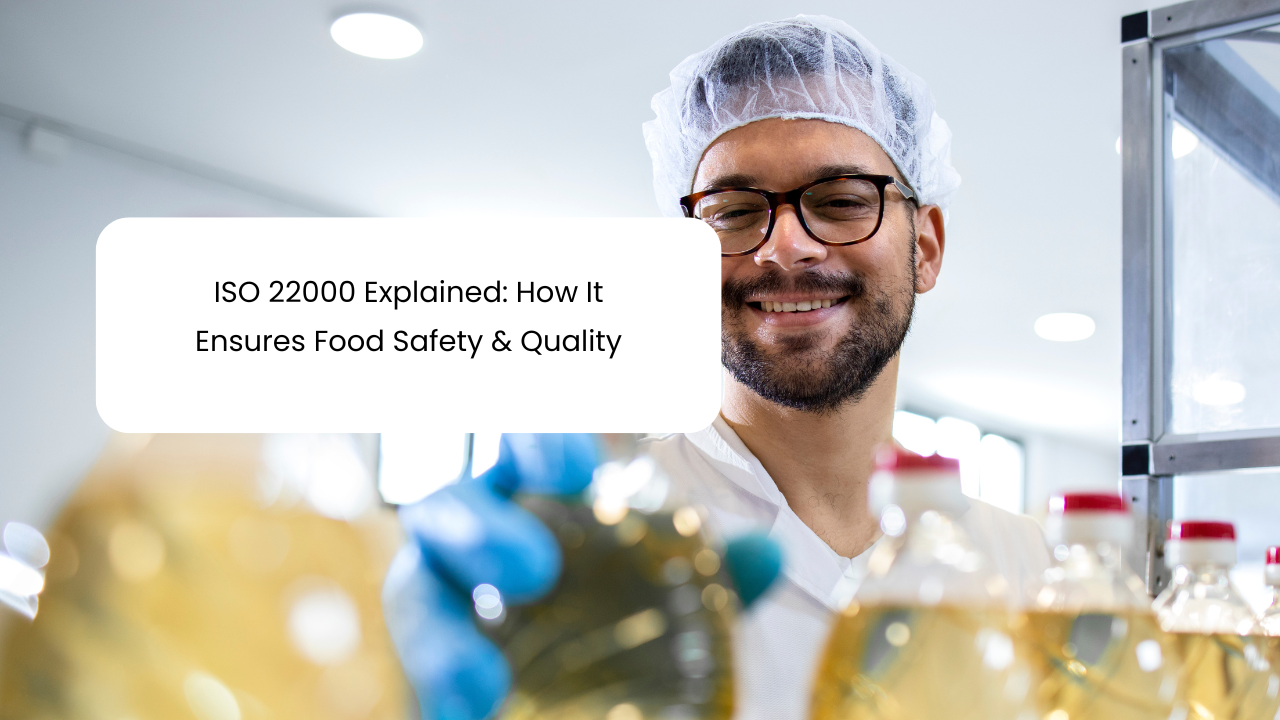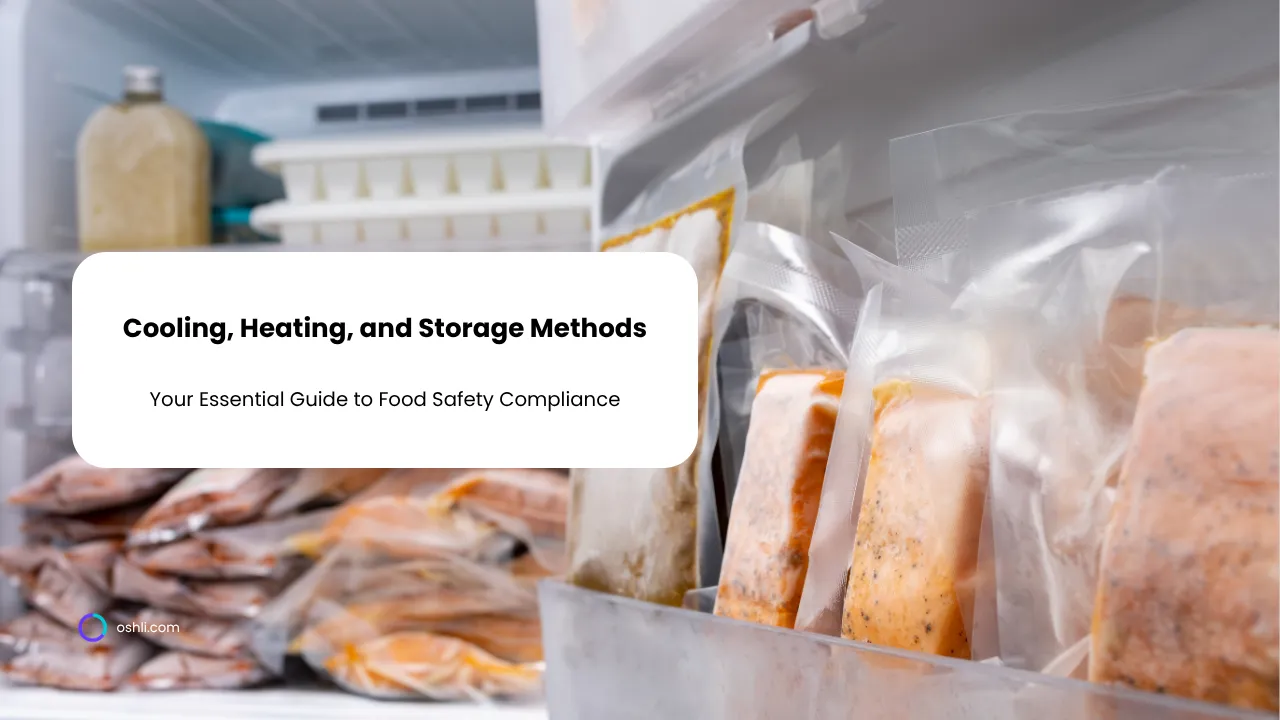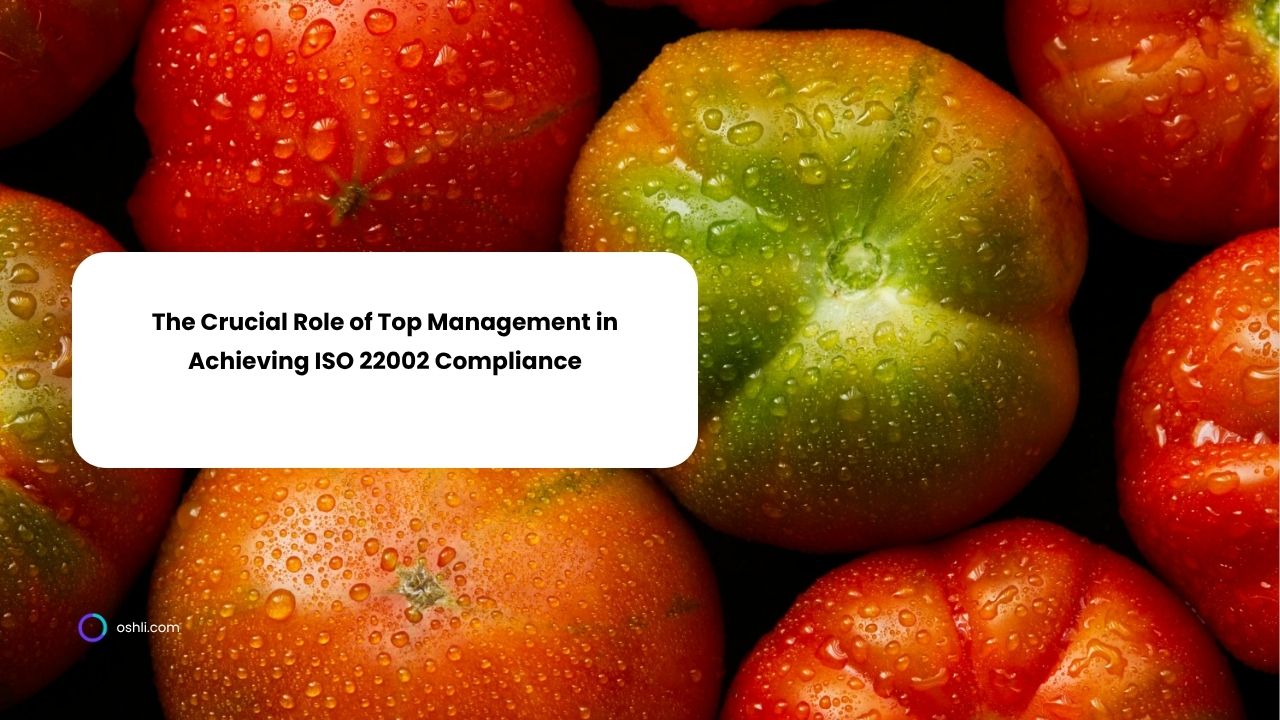
ISO 22000 Explained: How It Ensures Food Safety & Quality – A Comprehensive Guide
In the realm of food production and processing, ensuring safety and quality is not just a regulatory requirement—it is a moral and business imperative. As a food safety technician or food engineer, you understand the critical importance of maintaining rigorous standards. ISO 22000 is an internationally recognized standard that provides a framework for managing food safety throughout the supply chain. This guide is designed with your challenges in mind, offering clear insights and actionable steps to help you ensure that every product meets the highest safety and quality benchmarks.
In this comprehensive article, we will break down ISO 22000, explore its key components, and discuss how it plays a vital role in protecting consumers while supporting continuous improvement in your food safety management systems.
Table of Contents
- Understanding ISO 22000
- Key Principles of ISO 22000
- Risk-Based Approach
- Systematic Management
- Integration of HACCP
- Communication and Collaboration
- How ISO 22000 Ensures Food Safety & Quality
- Preventive Controls
- Continuous Monitoring
- Documented Procedures
- Supplier Management
- Key Components of an ISO 22000 Food Safety Management System
- Context of the Organization
- Prerequisite Programs (PRPs)
- Hazard Analysis and Critical Control Points (HACCP) Principles
- Operational Planning and Control
- Communication
- Benefits of Implementing ISO 22000
- 7 Steps for Implementing ISO 22000
- Step 1: Conduct a Comprehensive Risk Assessment
- Step 2: Develop Prerequisite Programs (PRPs)
- Step 3: Establish HACCP Principles
- Step 4: Create a Detailed Operational Plan
- Step 5: Enhance Communication Channels
- Step 6: Invest in Technology and Training
- Step 7: Regularly Audit and Review
- Real-World Success Stories
- Conclusion
Understanding ISO 22000
ISO 22000 is a globally recognized standard that specifies the requirements for a food safety management system. It integrates principles from Hazard Analysis and Critical Control Points (HACCP) and other preventive programs to ensure that food remains safe at every step of the food chain—from production to consumption.
Key Principles of ISO 22000
Risk-Based Approach
ISO 22000 emphasizes the identification, evaluation, and control of food safety hazards. This risk-based approach is central to preventing contamination and ensuring food quality.
Systematic Management
The standard requires organizations to establish, implement, maintain, and continually improve a food safety management system. This systematic management ensures consistency and reliability in food production processes.
Integration of HACCP
ISO 22000 builds on HACCP principles, ensuring that Critical Control Points (CCPs) are monitored and controlled effectively to prevent food safety hazards.
Communication and Collaboration
Effective communication along the food chain is vital. ISO 22000 encourages collaboration among stakeholders to manage food safety risks efficiently.
How ISO 22000 Ensures Food Safety & Quality
A Holistic Approach to Safety
By adopting ISO 22000, organizations commit to a comprehensive framework addressing every aspect of food safety. This standard not only prevents contamination but also maintains consistent food quality. Here’s how it works:
Preventive Controls
ISO 22000 mandates a proactive approach to identify and control hazards before they become issues. This includes regular hazard analysis, the establishment of control measures, and monitoring of critical points in the process.
Continuous Monitoring
The standard requires regular audits and continuous monitoring of food safety processes. This ongoing oversight helps detect and manage potential hazards in real time, reducing the risk of foodborne illnesses.
Documented Procedures
Clear, documented procedures ensure that everyone in the organization understands their role in maintaining food safety. These documents are vital for training, compliance, and continuous improvement.
Supplier Management
A key aspect of ISO 22000 is managing suppliers. By ensuring that suppliers adhere to strict safety standards, organizations can mitigate risks associated with raw materials and ingredients.
Key Components of an ISO 22000 Food Safety Management System
To fully understand how ISO 22000 works, it is essential to explore its key components:
1. Context of the Organization
Understanding your organization’s context is fundamental. This involves: - Identifying internal and external factors that affect food safety. - Defining the scope of your food safety management system. - Establishing objectives aligned with your business and regulatory requirements.
2. Prerequisite Programs (PRPs)
PRPs are the foundation of a robust food safety management system. They include: - Good Manufacturing Practices (GMP): Ensuring a clean and controlled production environment. - Sanitation Standard Operating Procedures (SSOPs): Detailed cleaning and sanitation protocols. - Allergen Management: Procedures to prevent cross-contamination between allergenic and non-allergenic foods.
3. Hazard Analysis and Critical Control Points (HACCP) Principles
HACCP forms the backbone of ISO 22000: - Hazard Identification: Determining potential biological, chemical, and physical hazards. - Critical Control Points: Identifying stages where hazards can be prevented, eliminated, or reduced to acceptable levels. - Monitoring and Verification: Continuous checks to ensure control measures are effective.
4. Operational Planning and Control
This component ensures that all processes are well planned and managed: - Establishing procedures and protocols for every step of the food production process. - Maintaining records for traceability and accountability. - Implementing corrective actions when deviations occur.
5. Communication
Effective communication is key to the success of any food safety system: - Internal Communication: Ensuring all employees are aware of safety protocols and their responsibilities. - External Communication: Sharing information with suppliers, customers, and regulatory bodies to maintain transparency and trust.
Benefits of Implementing ISO 22000
For food safety technicians and food engineers, ISO 22000 offers advantages that extend well beyond regulatory compliance:
- Enhanced Food Safety: A systematic approach to hazard control significantly reduces the risk of foodborne illnesses.
- Improved Product Quality: Consistent processes and rigorous controls lead to superior product quality and greater consumer satisfaction.
- Regulatory Compliance: ISO 22000 helps organizations meet legal requirements and avoid penalties.
- Increased Consumer Trust: Certification signals a strong commitment to safety and quality, bolstering brand reputation.
- Operational Efficiency: Streamlined processes and better resource management lead to cost savings and improved productivity.
- Employee Engagement: Clear safety protocols and ongoing training boost employee confidence and foster a culture of shared responsibility.
- Global Recognition: ISO 22000 certification opens international markets and builds credibility with global partners.
7 Steps for Implementing ISO 22000
Building a robust food safety management system requires careful planning and execution. Here are seven practical steps that workplace leaders can follow:
Step 1: Conduct a Comprehensive Risk Assessment
Start by identifying potential hazards at every stage of your food supply chain. Engage your team and stakeholders to gather insights and evaluate risks effectively.
Step 2: Develop Prerequisite Programs (PRPs)
Implement foundational programs such as GMP, SSOPs, and allergen management. Ensure these programs are well-documented and consistently followed.
Step 3: Establish HACCP Principles
Perform a thorough hazard analysis and determine your Critical Control Points (CCPs). Develop procedures for monitoring these points and establish corrective actions for any deviations.
Step 4: Create a Detailed Operational Plan
Document all operational processes and integrate them into your food safety management system. This plan should include record-keeping protocols and procedures for continuous monitoring and improvement.
Step 5: Enhance Communication Channels
Develop clear internal and external communication strategies. Train your team on their roles and responsibilities, and ensure that all relevant parties, including suppliers, are informed about your safety standards.
Step 6: Invest in Technology and Training
Equip your team with advanced technology for monitoring and controlling food safety hazards. Regular training sessions will ensure that everyone remains updated on best practices and regulatory requirements.
Step 7: Regularly Audit and Review
Implement a system for continuous improvement. Regular audits and reviews help identify areas for enhancement, ensuring that your food safety management system remains robust and compliant with ISO 22000 standards.
Real-World Success Stories
Your efforts in implementing ISO 22000 can transform your organization. Consider these examples:
Dairy Production:
A dairy plant that rigorously applied ISO 22000 principles reported a significant reduction in microbial contamination, leading to improved product quality and increased consumer trust.
Packaged Foods:
A packaged food company achieved a 30% reduction in product recalls and bolstered its international reputation after implementing comprehensive PRPs and HACCP systems.
Fresh Produce:
By investing in advanced monitoring systems and regular staff training, a fresh produce supplier reduced instances of chemical contamination while maintaining high food safety standards.
Beverage Industry:
A beverage manufacturer improved traceability and minimized allergen cross-contamination risks, resulting in enhanced operational efficiency and customer satisfaction.
These success stories underscore the tangible benefits of ISO 22000, reinforcing the idea that a robust food safety management system not only protects consumers but also drives business excellence.
Conclusion
ISO 22000 is more than just a standard—it is a comprehensive framework that embodies a commitment to food safety and quality. For food safety technicians and food engineers, your role in implementing and maintaining this system is critical. By following the seven steps outlined above, you can create a food safety management system that meets regulatory requirements, builds consumer trust, enhances product quality, and fosters a culture of continuous improvement.
Your expertise and dedication are the cornerstones of a safe food supply chain. Every proactive measure you take, every risk you mitigate, and every training session you conduct contributes to protecting consumers and ensuring that food products reach the highest standards of safety and quality.
Remember, building a strong safety culture is a journey that requires collaboration, continuous learning, and unwavering commitment. With ISO 22000, you have a powerful tool to drive this change—empowering you to lead your organization toward a safer and more prosperous future.
Together, we can ensure that every bite is safe and every product meets the highest quality standards.
Join our newsletter!
Enter your email to receive our latest news.
Don't worry, we don't spam
Related Articles

Guide to Developing a Professional Checklist for ISO 45001 Diagnostic Audits
The ISO 45001 standard establishes a framework for Occupational Health and Safety Management Systems (OHSMS), aiming to enhance employee safety, reduce workplace risks, and create safer working conditions. A diagnostic audit aligned with ISO 45001 is a proactive approach that allows organizations to assess current compliance, identify weaknesses, and prioritize improvements. Central to this process is a professionally structured checklist that ensures consistency, accuracy, and depth in audit execution.

Cooling, Heating, and Storage Methods: Your Essential Guide
Discover how to create a cooling, heating, and storage methods template to ensure food safety, meet compliance, and optimize temperature control with free templates.

The Crucial Role of Top Management in Achieving ISO 22002 Compliance
Explore how top management's leadership drives ISO 22002 compliance, ensuring robust food safety management through commitment, policy, and oversight.


